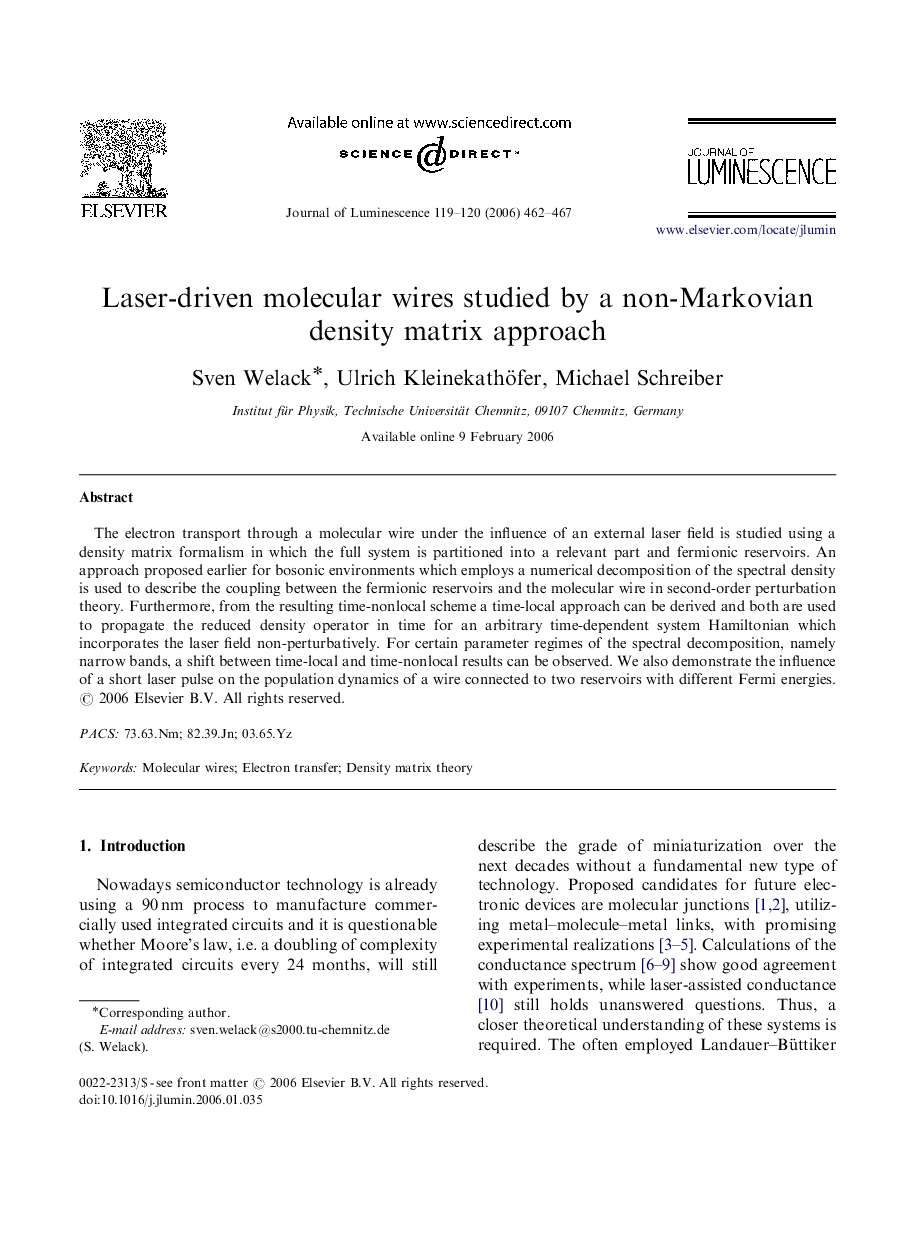| Article ID | Journal | Published Year | Pages | File Type |
|---|---|---|---|---|
| 5404222 | Journal of Luminescence | 2006 | 6 Pages |
Abstract
The electron transport through a molecular wire under the influence of an external laser field is studied using a density matrix formalism in which the full system is partitioned into a relevant part and fermionic reservoirs. An approach proposed earlier for bosonic environments which employs a numerical decomposition of the spectral density is used to describe the coupling between the fermionic reservoirs and the molecular wire in second-order perturbation theory. Furthermore, from the resulting time-nonlocal scheme a time-local approach can be derived and both are used to propagate the reduced density operator in time for an arbitrary time-dependent system Hamiltonian which incorporates the laser field non-perturbatively. For certain parameter regimes of the spectral decomposition, namely narrow bands, a shift between time-local and time-nonlocal results can be observed. We also demonstrate the influence of a short laser pulse on the population dynamics of a wire connected to two reservoirs with different Fermi energies.
Related Topics
Physical Sciences and Engineering
Chemistry
Physical and Theoretical Chemistry
Authors
Sven Welack, Ulrich Kleinekathöfer, Michael Schreiber,
